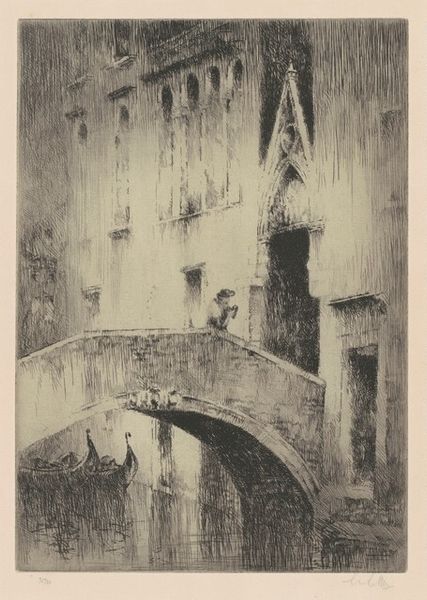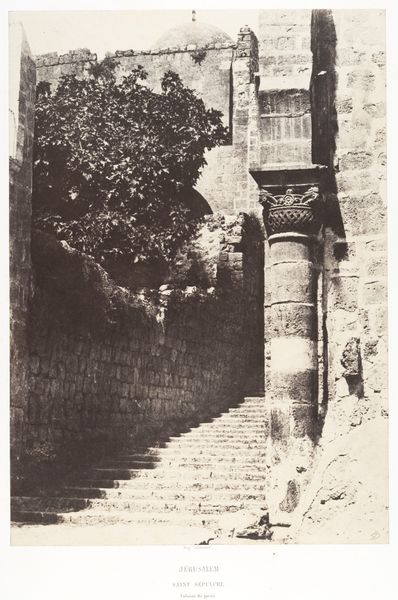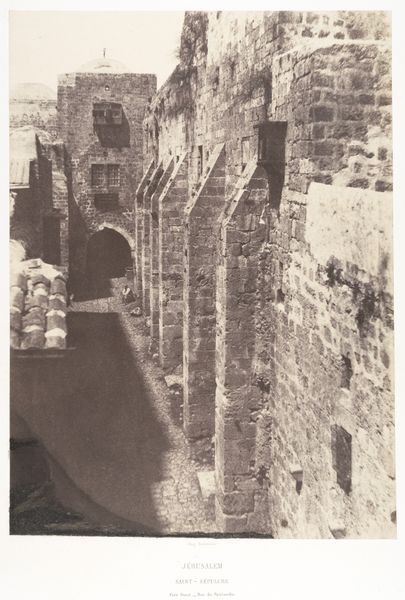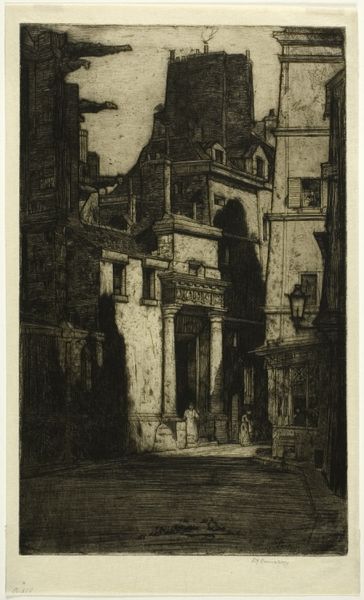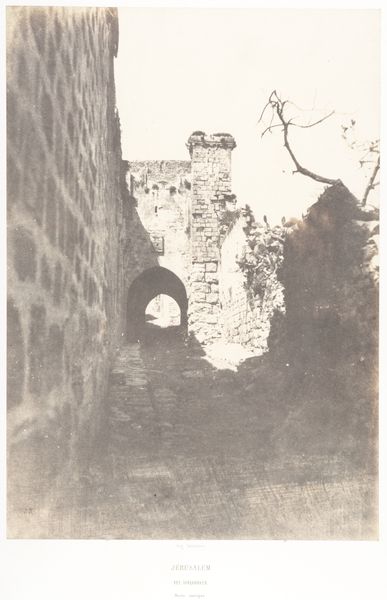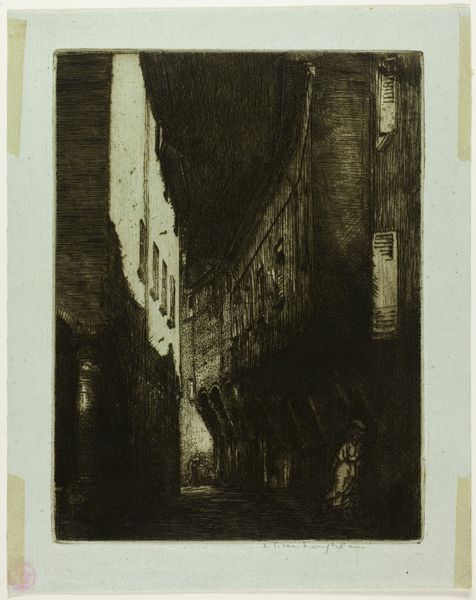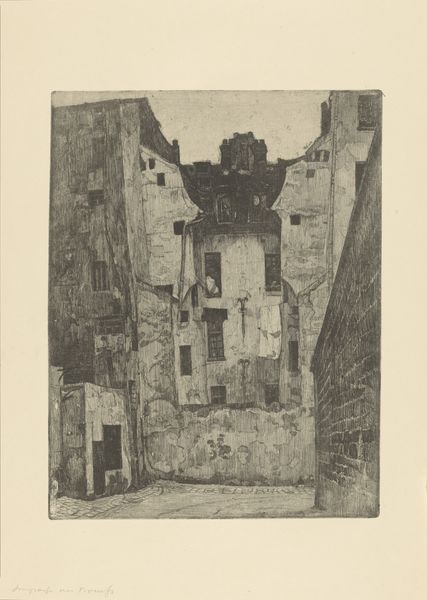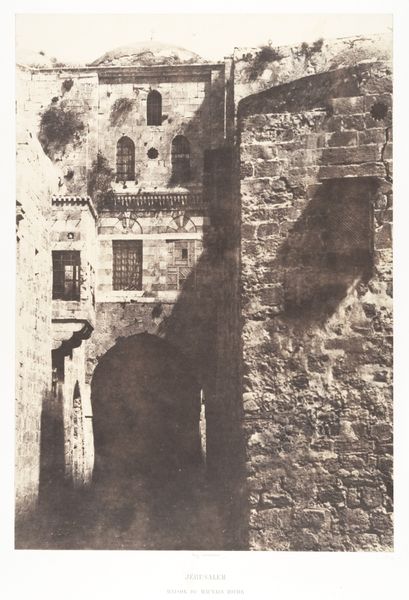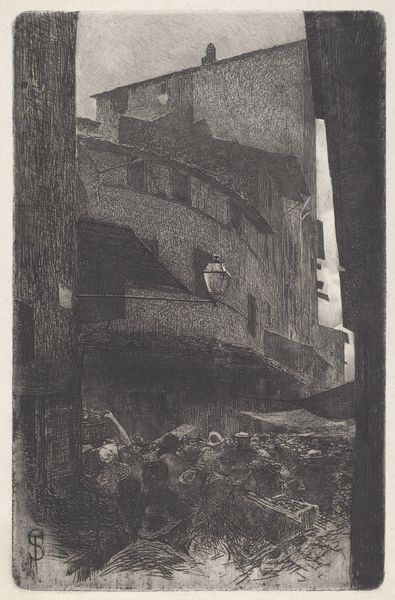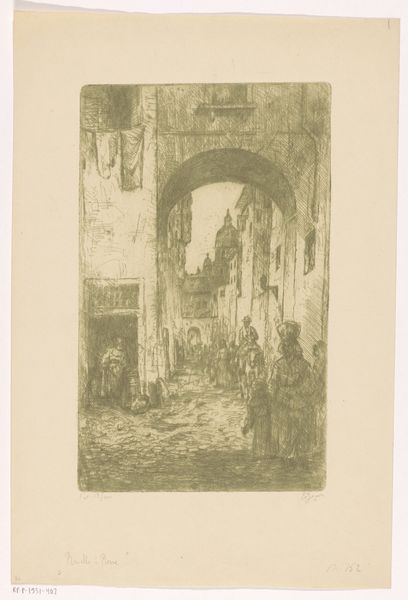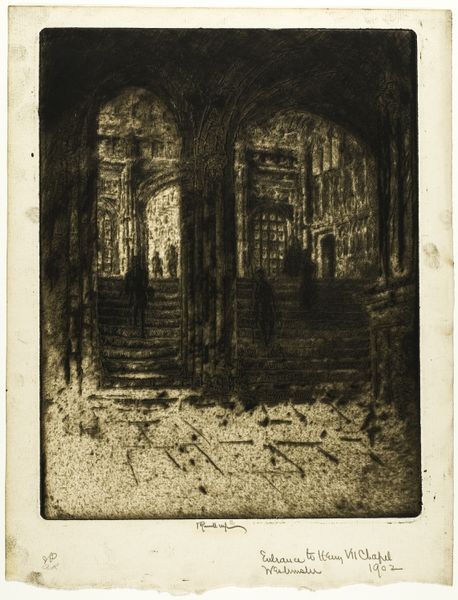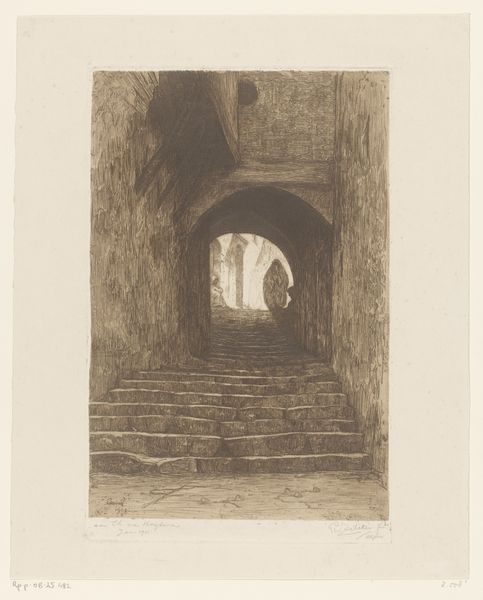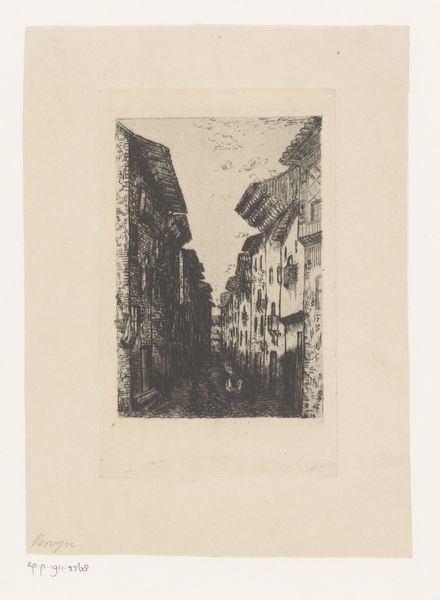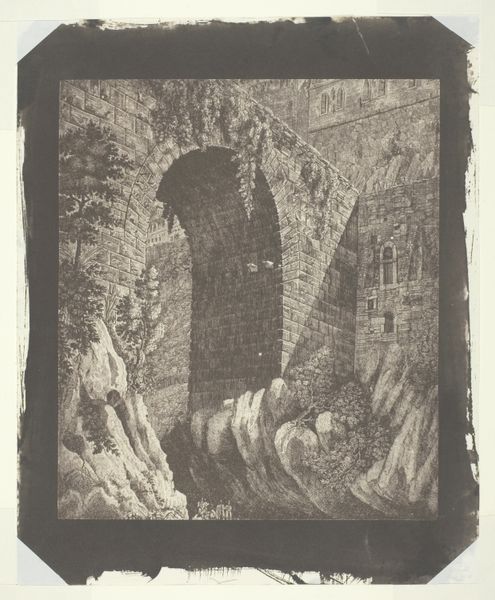
print, daguerreotype, photography, architecture
#
16_19th-century
# print
#
daguerreotype
#
photography
#
cityscape
#
islamic-art
#
architecture
Dimensions: Image: 32.7 x 23.6 cm (12 7/8 x 9 5/16 in.) Mount: 59.6 x 44.6 cm (23 7/16 x 17 9/16 in.)
Copyright: Public Domain
Curator: This photograph, "Jérusalem, Rue du quartier arabe, 1," was created between 1854 and 1859 by Auguste Salzmann, part of a larger series he made in Jerusalem. He employed the daguerreotype process to capture this cityscape. Editor: There’s an undeniable starkness to this image, almost austere. The oppressive weight of the stone architecture, the shadowed alleyway… It feels almost like a stage set. Curator: Indeed. Salzmann's photographs from this period are marked by their rigorous documentation. Look at the careful framing, the contrast, and the way light sculpts the surfaces of the stone. Editor: Speaking of surfaces, notice the weathering on those stones. Each pitted surface, each worn edge whispers of centuries of exposure and human contact. It invites thoughts about the quarries, the transportation, the very labor required to erect these structures. The means by which civilization makes itself. Curator: Certainly, one can see evidence of wear and tear. However, what strikes me is the composition: the complex interplay of geometric forms—arches, balconies, and window lattices—each precisely rendered. The effect draws one’s eye upwards through the narrow space. Editor: For me, the human presence, or rather absence, speaks volumes. Who labored to shape this city, to construct these dwellings? We glimpse not the wealthy occupants but the unacknowledged hands. Curator: Salzmann's attention to architectural detail, particularly the formal articulation of space, seems more aligned with the emerging discourse around objective visual recording that one sees elsewhere in European art from this era. Editor: True, but the stark contrast between light and shadow creates a particular atmosphere—one that forces questions about access, about how the sun itself discriminates based on wealth and standing. I suppose for me, thinking about these questions brings the image closer to us today. Curator: That is certainly one valid interpretive pathway. On the other hand, for me, returning to Salzmann’s technical proficiency allows access to a much deeper, perhaps unintended reading, about structure. Editor: And for me, it opens dialogue about people, materials, labor… and finally, time.
Comments
No comments
Be the first to comment and join the conversation on the ultimate creative platform.
